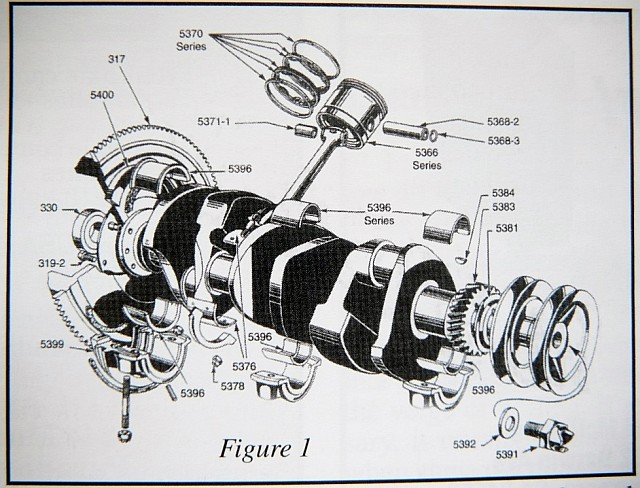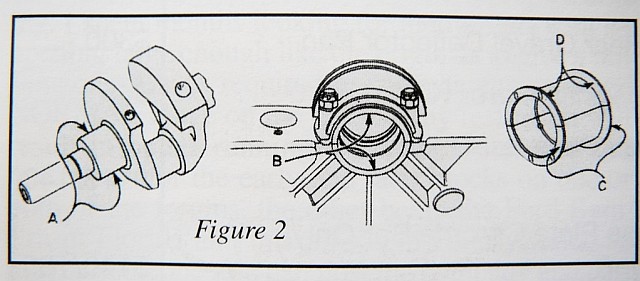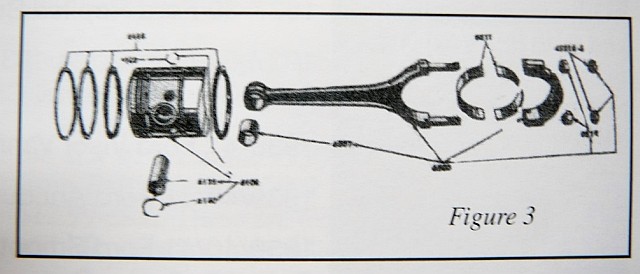What can you do if you want a rope rear main seal in your 1932-41 flathead V8?
 If you are working on a 1932-41 flathead engine that is late enough to have the pot metal labyrinth seal inserts, both top and bottom, it is easy to make the change. You may just change the crankshaft and seal pieces for the later parts.
If you are working on a 1932-41 flathead engine that is late enough to have the pot metal labyrinth seal inserts, both top and bottom, it is easy to make the change. You may just change the crankshaft and seal pieces for the later parts.
If your engine is a 221 cubic inch, you will probably want to stay with a 1.998" journal and early full floating rods. The rods for 2.138" journals will not pass through the 3 1/16" cylinder bores
You can use a 1949-53 crankshaft in the early engines. You would have to turn the main journals down to 2.398" to fit in the mid-1936 through 1938 block. You also have to relieve either the block or the crankshaft at the rear of the front main and both sides of the center main journal. If it is a 4" stroke crankshaft with the rod journals offset ground on 4 1/8" stroke to 1.998" size, you can use 21A and/or 91A rods which will pass through the 3 1/16" cylinder bores.

When mixing crankshafts, rods, and blocks, use the correct bearing set for the housings (block and rods) in the correct undersize for the journals of the crankshaft.
For the 1932 through mid-1936 blocks, you can grind the crankshaft rear labyrinth slinger away to a 2.498" surface. Then install an upper seal retainer for a rope and an aftermarket adaptor type seal retainer in the main cap. That way you can use the stock rope seals.
Note that you can use full floating rods with the correct bearing on crankshafts designed for side by side rod bearings. You cannot successfully use 1949-53 rods and bearings on the earlier crankshafts, which are designed for full floating rods and bearings. These crankshafts have just one oil hole, in the center of the journal, so too much oil flow is lost between the rods.
 We do not see any differences between 21A and 91A forging number rods and use them interchangeably. The same is true with 99A and 29A rods, used interchangeably. The weights are also similar.
We do not see any differences between 21A and 91A forging number rods and use them interchangeably. The same is true with 99A and 29A rods, used interchangeably. The weights are also similar.
Because the flathead rods have studs rather than rod bolts, if the threads are damaged, the rod must be replaced. You can, of course, add new nuts.
When the big ends of flathead rods are being resized, it is difficult to angle cut the cap enough to bring the sides in along the parting line. This is particularly true if the rods have a lot of wear. The solution for full floating rods, if they are otherwise good, is to resize them to +.004" or +.008". Ford and the aftermarket manufacturers make rod bearings with oversize ODs to allow this use. Finishing the big end bore oversize also relieves stress on the rod studs because they don't have to bend as they do if the rod caps are angle cut.
Have fun and drive your old Fords!